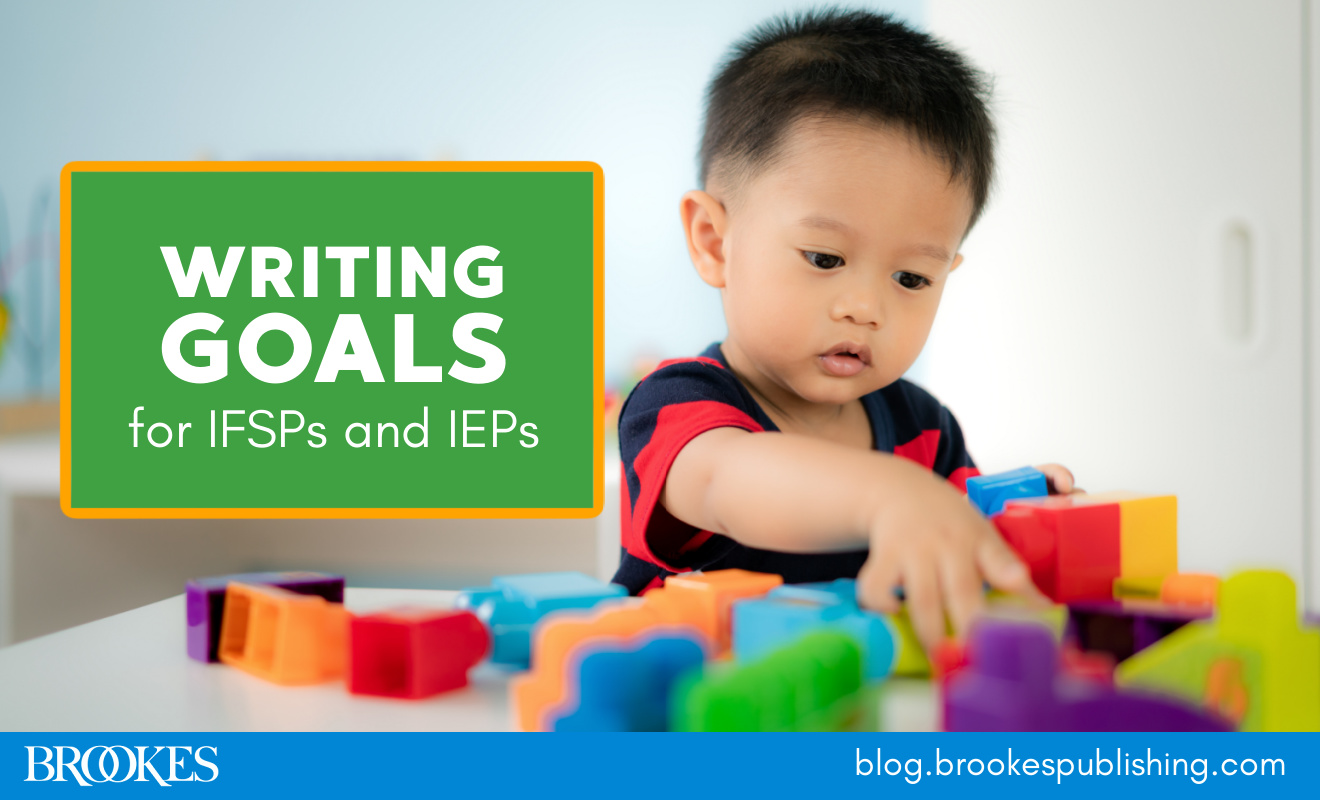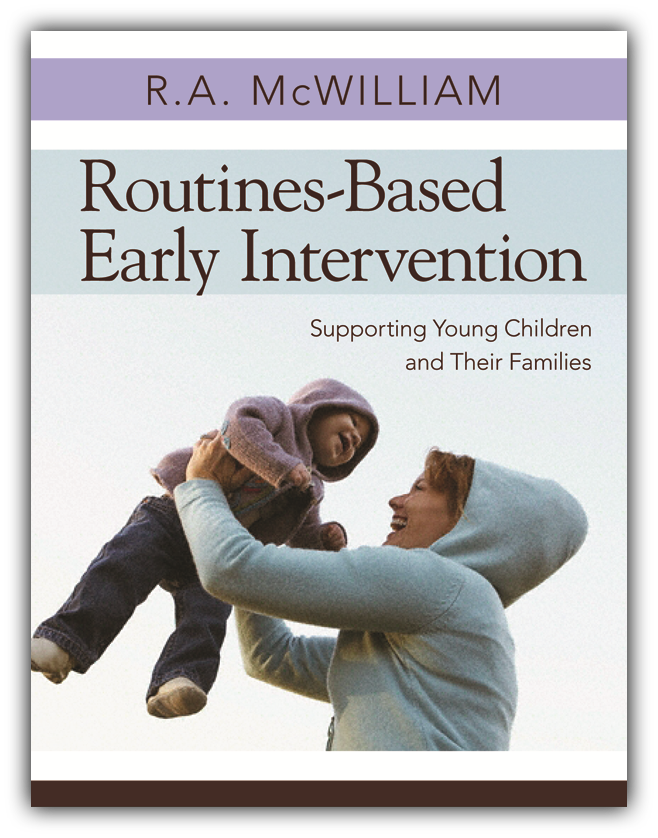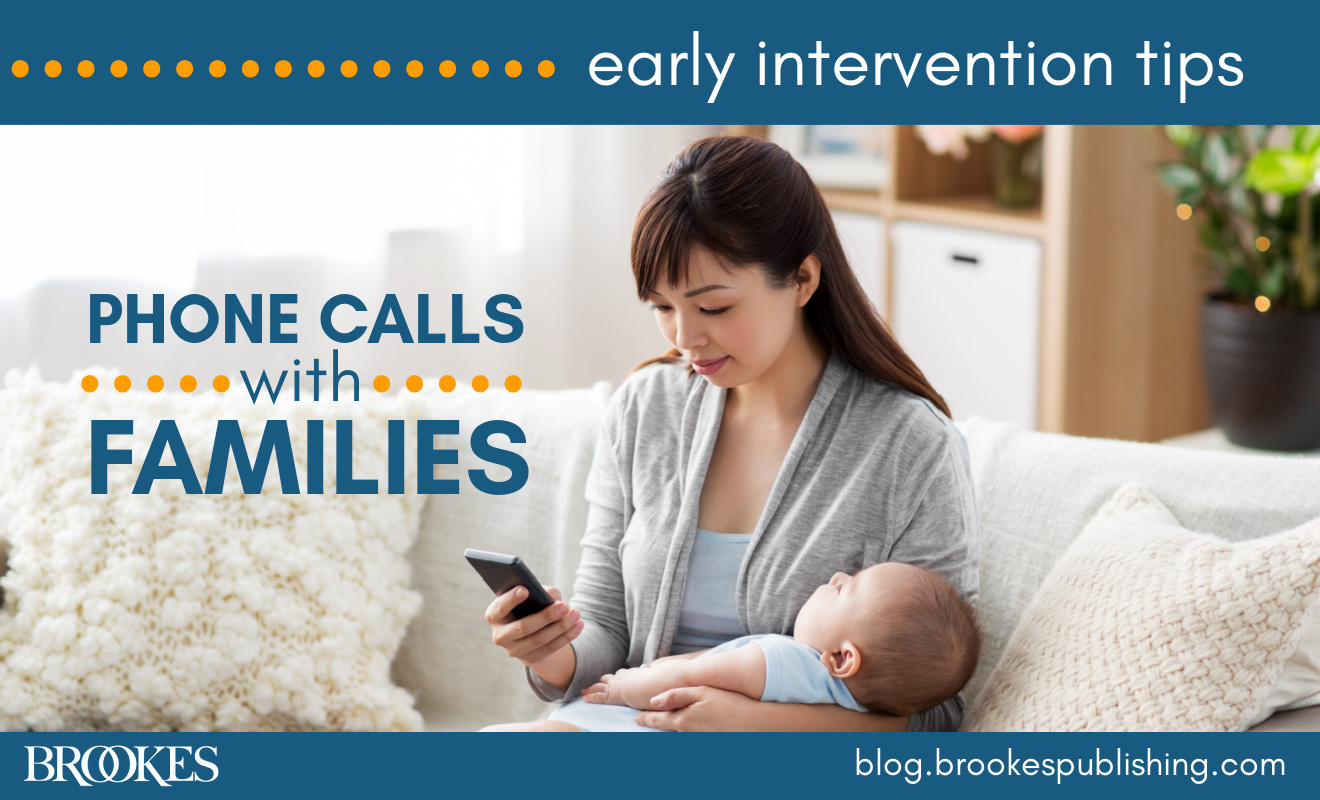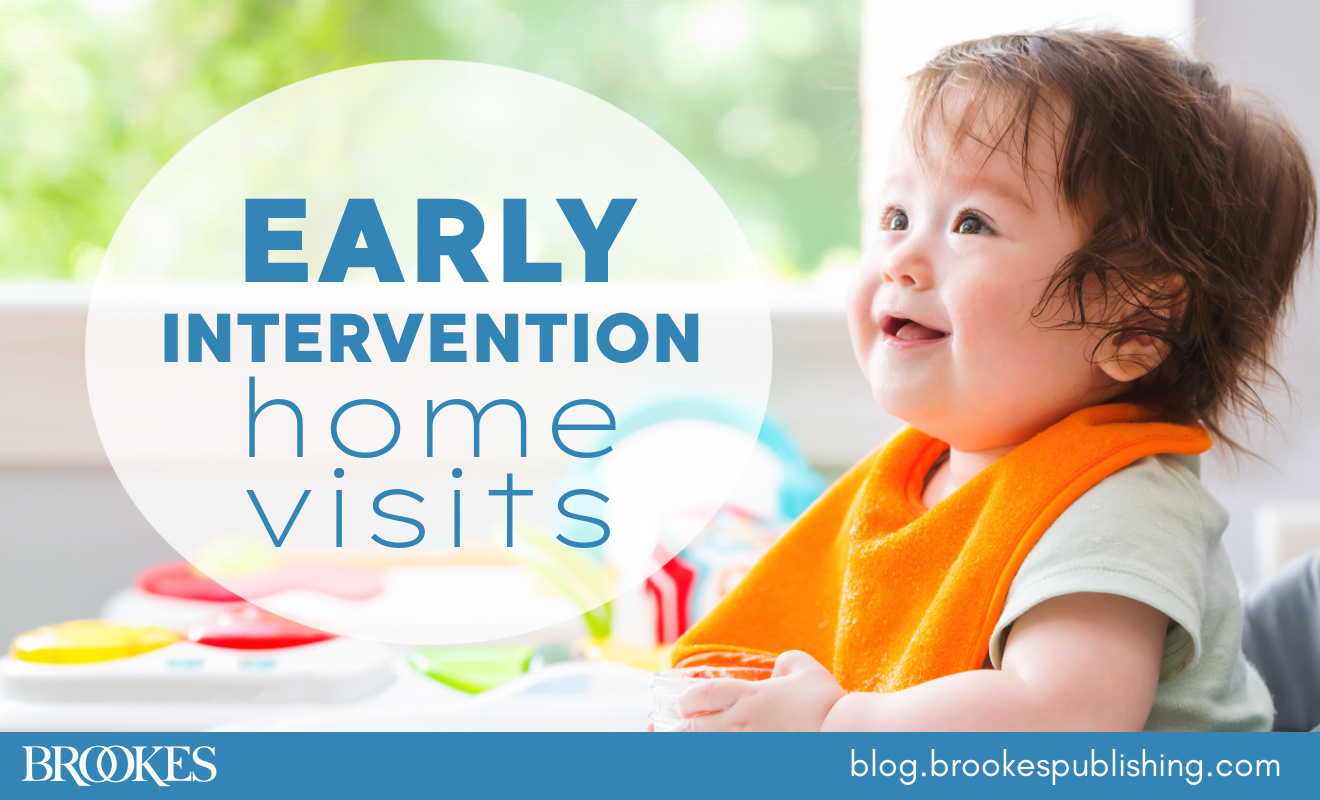7 Tips for Writing Functional Goals for IFSPs and IEPs
March 28, 2024
 One key to effective early intervention is writing high-quality IFSPs and IEPs with clear, specific, measurable goals. These goals should 1) directly address the family’s priorities, and 2) help children develop skills that are relevant to their everyday life. In today’s post, excerpted and adapted from Routines-Based Early Intervention by R.A. McWilliam, we’re sharing 7 guidelines early intervention professionals should keep in mind when developing functional goals for a young child’s IFSP or IEP.
One key to effective early intervention is writing high-quality IFSPs and IEPs with clear, specific, measurable goals. These goals should 1) directly address the family’s priorities, and 2) help children develop skills that are relevant to their everyday life. In today’s post, excerpted and adapted from Routines-Based Early Intervention by R.A. McWilliam, we’re sharing 7 guidelines early intervention professionals should keep in mind when developing functional goals for a young child’s IFSP or IEP.
Keep the family at the forefront. Functional goals on IFSPs and IEPs should always reflect the priorities of the family and be meaningful and relevant within the family’s real-life routines and activities.
Use good verbs. Verbs need to reflect observability and measurability and identify the end point. Avoid using words such as improve and increase, verbs related to internal processes that are not observable (such as understand), and goals that aim for the child to tolerate something they don’t want to do, such as participate in a therapeutic activity. Good verbs describe what the family wants the child to do. For example, the goal of “Maya will tolerate being prone over a therapy ball” should be restated as something like “Maya will participate in playtimes, mealtimes, and car rides by holding her head up.” The good verbs in the latter example are participate and holding her head up.
Think outside the therapy room. Write goals that can be addressed by multiple people at multiple times of the day, during regular routines and activities. For example, state “Auguste will participate in outside play by stepping up and down, on and off different surfaces” rather than “Auguste will step up and down on the stair equipment in the therapy room.”
Ask “why?” Always ask yourself, “Why is the child working on this goal?” The answer should be immediately apparent. Goals should address skills that are necessary or useful for participation in home, school, or community routines. In the above example, the reason is clear: Auguste is working on this goal so he can participate in outside play. The team, including the family, should have a reminder in the goal statement about why the goal is necessary.
Be clear. A goal like “Folami will maintain a four-point position for 30 seconds five times a day” is not clear enough, because most parents would not know what a four-point position is. The goal also doesn’t indicate why Folami should be working on this goal. It probably could be addressed by multiple people in normal routines, if they knew what it was.
Avoid jargon. One way to increase clarity is to avoid jargon. Steer clear of terms such as ambulate, mean length of utterance, pincer grasp, oral-motor skills, verbal exchanges, and minimal physical assistance in goal statements. Instead, terms such as walk; three-word phrases; thumb and finger; bite, chew, or swallow; back and forth; and with a little help are simple and understandable.
Get specific. A goal such as “Jada will walk” is not specific enough, because it doesn’t provide measurability or connect the goal to the family’s routines. A better way to word the goal might be, “Jada will participate in outings to stores by walking with one hand held for 25 yards.”
Writing goals for IFSPs and IEPs is just one important part of early intervention that supports each family’s needs and improves young children’s outcomes. Get the book Routines-Based Early Intervention for a highly respected, family centered early intervention model to use in your program!




Write a Comment
Your email address will not be published. Required fields are marked *
Post a Comment